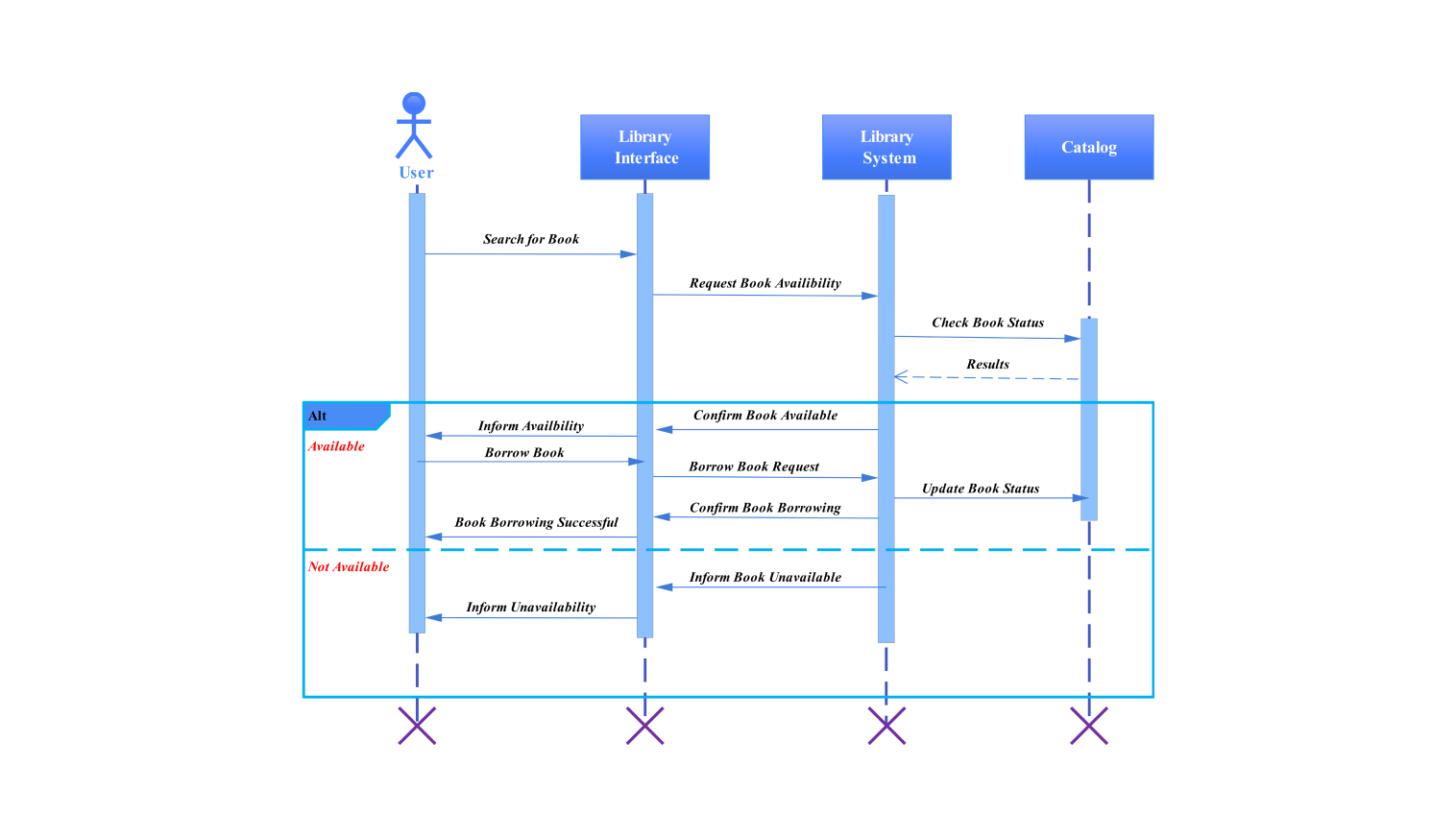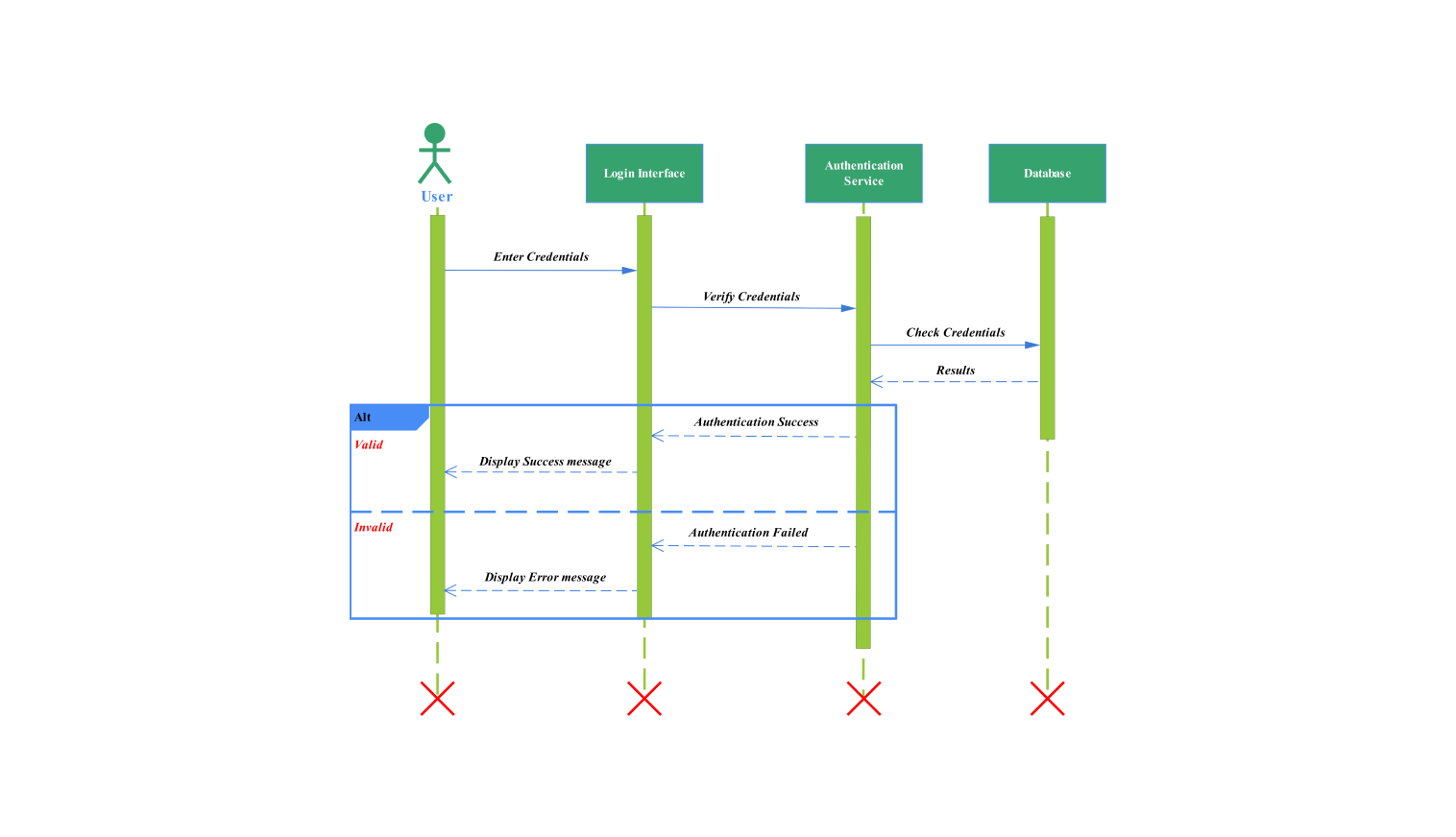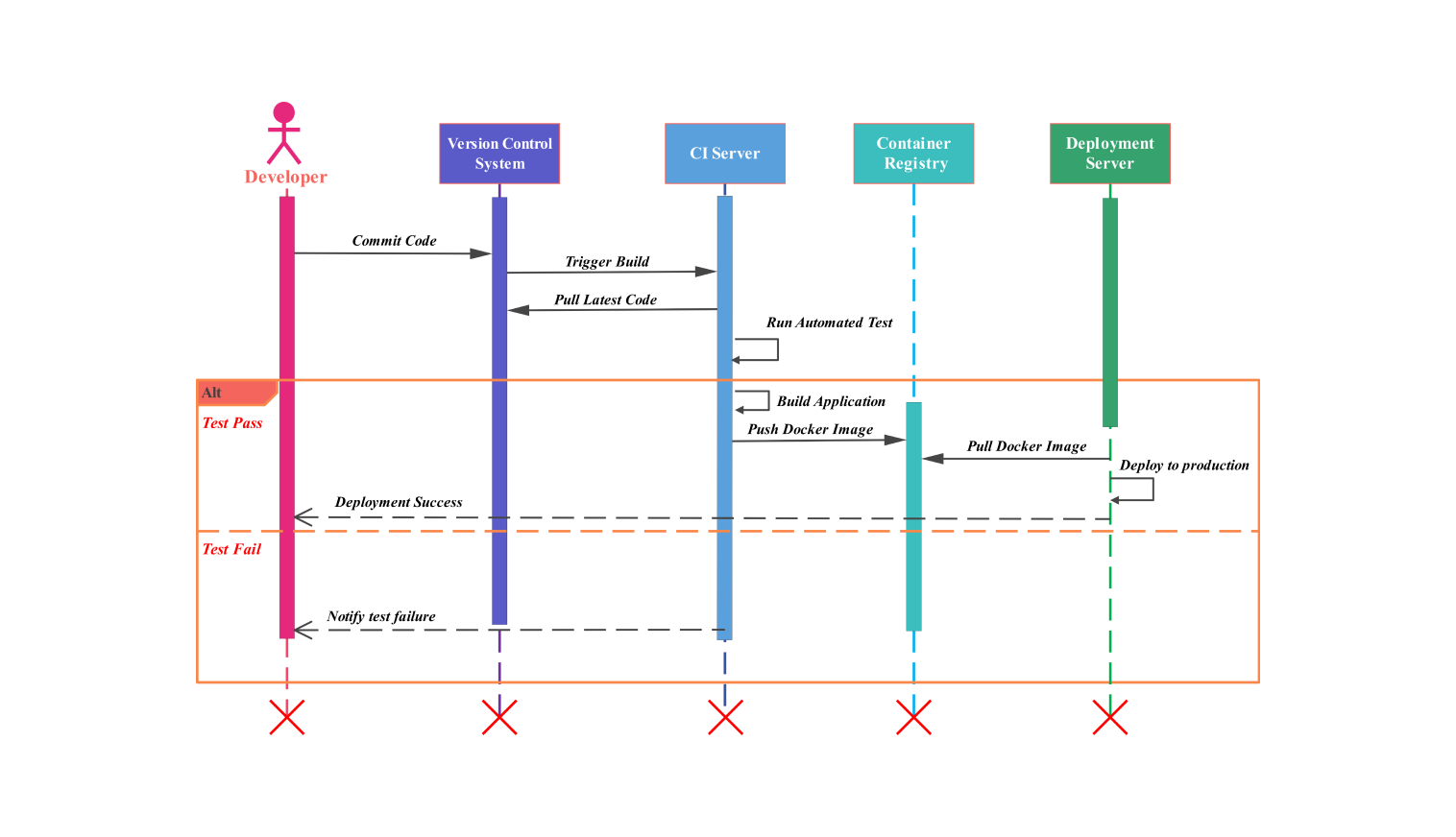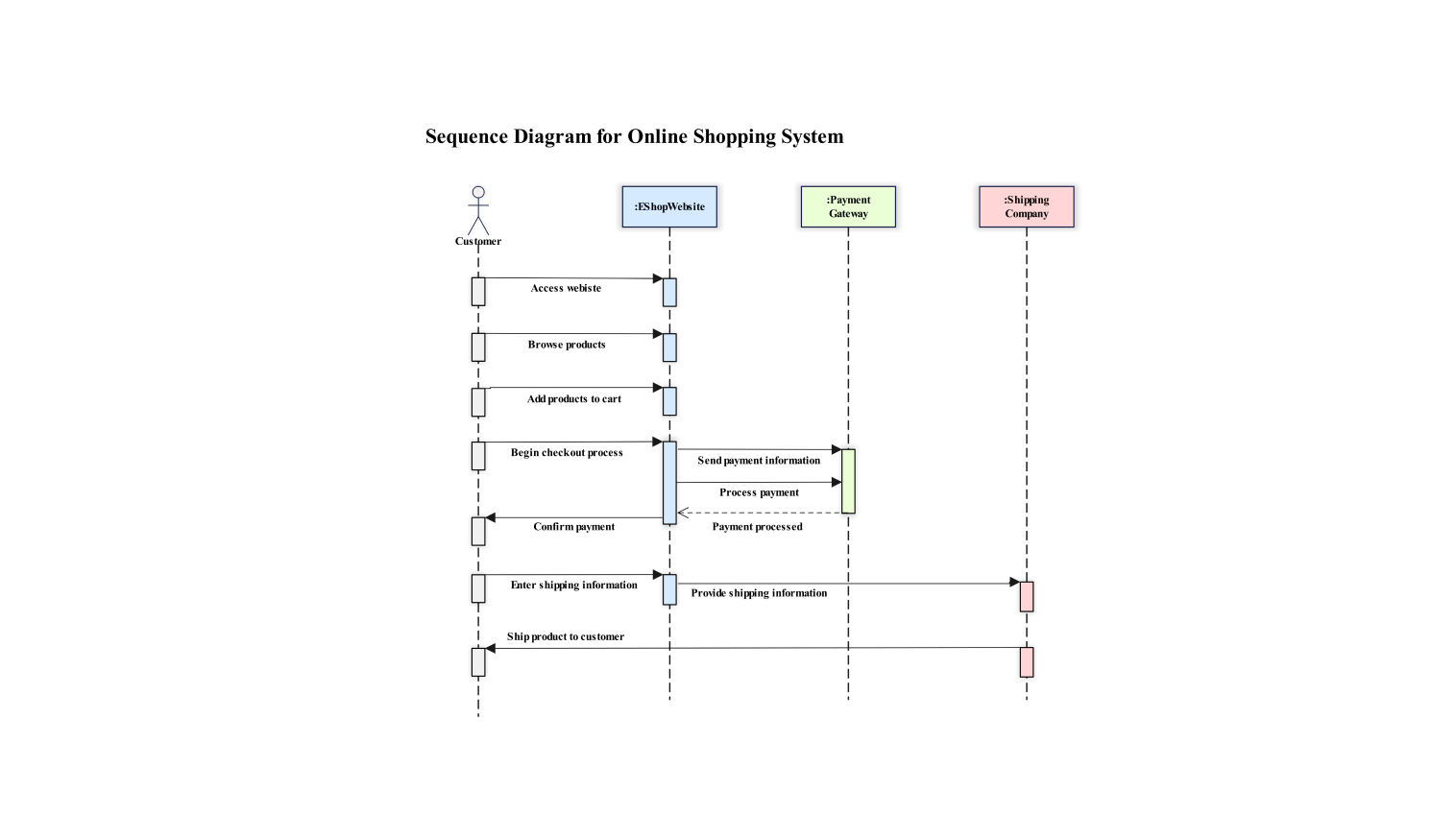- All templates
- Sequence diagram templates
- Sequence diagram library management
About this sequence diagram for the library management
This figure summarizes the library management system's processes. It shows how the user interacts with the library interface, library system, and catalog. A sequence diagram helps both beginners and specialists visualize the actions involved in borrowing and returning books.
The diagram provides us with an overview of the process by starting with the user first searching for a book. The library interface then queries the library system about the book's availability, which in turn checks the catalog.
If the book is available, the library system confirms this to the user, allowing the borrowing process to proceed. If the book is not available, the user is informed of this.
This sequence diagram captures the interactions occurring between the catalog update and the initial book search. Using basic features such as arrows and lifelines helps to do so. It represents both successful and unsuccessful borrowing scenarios.
Such sequence diagrams are a visual approach to understanding complex processes. This concept essentially highlights the steps for library management. This offers a better understanding for the users. It also helps in making it an excellent tool for documentation, debugging, and improving communication.
This diagram serves as an effective tool for enhancing documentation. It also aims to solve management issues. It has a clear and precise nature that encourages team participation. It is designed with a systematic approach applicable to any library management system. Book borrowing and returning processes become smooth and efficient using this diagram.
The basic interactions of the system are explained by this sequence diagram. The main actors are the user, library interface, library system, and catalog. It also illustrates other circumstances, such as book availability and unavailability.
It's a useful tool for understanding how each component communicates and responds. The diagram gives an extensive overview of the borrowing process. This visual depiction helps to discover potential changes. Ensuring a consistent user experience in the library management system is another purpose.
How to use this template
Click the Edit free online button to open and customize the diagram. Modify the diagram using shapes, lines, boxes, and other elements present on the left pane. Choose to suit your specific library management workflow.
Once the general design is finalized, make precise adjustments as needed.
Customize the style of various diagram elements and edit the text. Save the modified elements for future use.
Finally, save and share the customized diagram in SVG, EDDX, PPTX, PDF, or JPG formats.
Benefits of the sequence diagram
This library management sequence diagram offers several usability benefits. It can be used in training sessions to help new staff understand the library management process.
People working on development and testing can use it to debug the workflow. They find it easy to identify possible issues early that arise in the development phase. It is also beneficial during design reviews to ensure all stakeholders have a common understanding of system interactions.
By clearly illustrating the process from book search to borrowing or error notification, this diagram helps identify and resolve issues such as book availability conflicts and system errors. Overall, it facilitates better communication, accelerates development, and enhances the reliability and efficiency of the library management system.
FAQs about the sequence diagram
-
What role does a sequence diagram play in a library management system?
A sequence diagram illustrates the step-by-step interactions between the user, library interface, library system, and catalog during a library transaction. It helps in understanding the flow and identifying potential bottlenecks.
-
What entities are critical in a library management sequence diagram?
Key elements are the user (initiating the communication), library interface (the place for interaction), library system, and catalog. The diagram shows interactions such as searching for a book, checking availability, borrowing a book, and updating the catalog.
-
What is the working process of a sequence diagram?
Sequence refers to the ordering of messages that pass throughout the scenario between two objects. These objects are denoted by lifelines and they exchange the messages for communication purposes.
-
Which model can be applied using this library management system’s sequence diagram to develop the entire system?
The following diagram is explained in such a way that the traditional model “waterfall model” from the SDLC can be applied. This is because the library management system (LMS) can tackle the challenges that come across recent LMSs.
Related templates
Get started with EdrawMax today
Create 210 types of diagrams online for free.
Draw a diagram free Draw a diagram free Draw a diagram free Draw a diagram free Draw a diagram free




